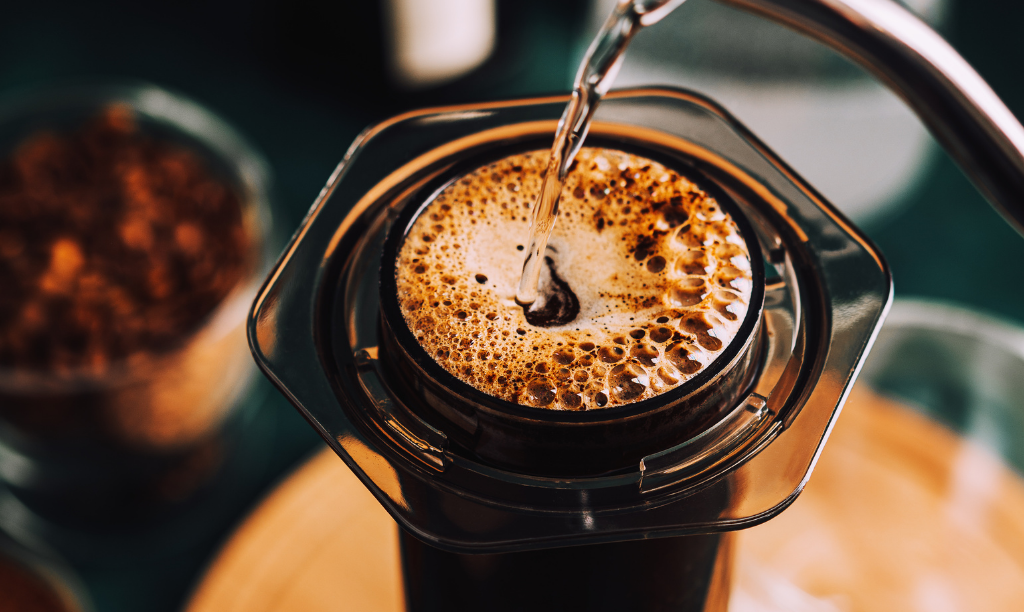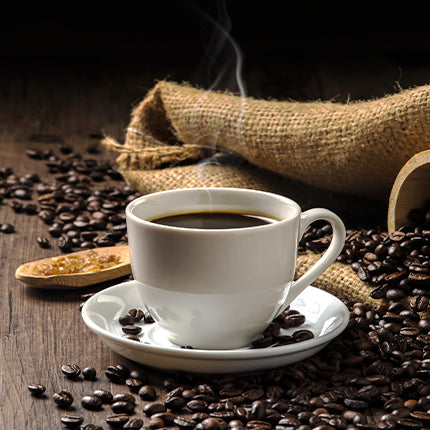The Effect of Various Coffee Brewing Methods on Flavor and Aroma
The Effect of Various Coffee Brewing Methods on Flavor and Aroma
Blog Article
The Scientific Research Behind Coffee Brewing: How Temperature Level and Time Affect Your Drink
Comprehending the science behind coffee brewing reveals that temperature level and time are not simple variables however pivotal components that dictate the beverage's taste account and total top quality. As we check out the subtleties of these aspects, the inquiry emerges: how can one efficiently equilibrium temperature level and time to accomplish that excellent mixture?
The Chemistry of Coffee Removal
The chemistry of coffee removal looks into the intricate processes that change raw coffee beans right into the aromatic beverage delighted in worldwide. This change primarily entails the solubility of various substances present in the beans, which are influenced by factors such as work dimension, water high quality, and the brewing approach employed.
Throughout the brewing process, hot water serves as a solvent, removing soluble substances, consisting of caffeine, lipids, sugars, and acids, from the coffee grounds. Each compound adds to the flavor profile, scent, and body of the last beverage. Acids are responsible for zesty and intense notes, while oils contribute to a rich mouthfeel.
The first stages of brewing remove acids and sugars, leading to a pleasurable level of acidity, while long term removal can lead to resentment due to over-extraction of unwanted compounds. Recognizing these chemical interactions is vital for enhancing brewing strategies, as the balance in between removal time and water temperature level can significantly affect the overall top quality of the coffee.
Perfect Developing Temperatures
Locating the right developing temperature level is necessary for unlocking the full capacity of coffee tastes and fragrances - coffee brewing methods. Study suggests that the ideal variety for developing coffee lies between 195 ° F to 205 ° F(90 ° C to 96 ° C) Within this variety, the removal procedure efficiently dissolves the desirable soluble substances in coffee beans, causing a tasty and well balanced cup
Developing at reduced temperatures, such as listed below 195 ° F(90 ° C ), might result in under-extraction, producing a weak and acidic mixture with muted flavors. Alternatively, developing at temperatures going beyond 205 ° F(96 ° C) can result in over-extraction, generating a extreme and bitter taste as a result of the excessive dissolution of undesirable compounds, such as tannins.
Moreover, the suitable developing temperature can vary depending on the coffee bean kind and roast level. Lighter roasts commonly benefit from slightly greater temperatures to enhance their complicated flavor accounts, while darker roasts might be better matched to lower temperatures to mitigate anger.
Inevitably, preserving accuracy in developing temperature levels is crucial for attaining an unified balance of tastes, ensuring that every mug of coffee supplies an enjoyable sensory experience.
Impact of Developing Time
Brewing time plays a critical function in identifying the taste account and general high quality of coffee. Much shorter brewing times can result in under-extraction, leading to a weak or sour taste, as not sufficient soluble substances are liquified.
Optimal developing time differs relying on the method used and the grind size of the coffee. As an example, a French press typically requires concerning four mins, while espresso extraction is typically completed within 25 to 30 seconds. It is important to adjust brewing time in conjunction with other variables, such as water temperature level and coffee-to-water proportion, to achieve the wanted flavor account.
Understanding the effect of brewing time allows coffee fanatics to fine-tune their brewing techniques, inevitably improving the sensory experience of their cup (coffee brewing methods). With careful interest to this variable, one can open the complete potential of the coffee, revealing its special characteristics and subtleties
Developing Approaches and Their Impacts

For example, techniques like French press and cool brew enable a longer steeping time, leading to a fuller body and robust flavor as a result of increased extraction of oils and soluble solids. Conversely, espresso brewing uses high pressure and a much shorter extraction time, producing a focused shot that highlights intense flavors and an abundant crema.
Pour-over methods, such as Chemex or V60, provide a more controlled extraction process, allowing the maker to control flow price and water distribution, which can boost illumination and clearness. Percolation techniques cycle water with the coffee grounds numerous times, leading Going Here to a stronger, typically bitter taste.
Lastly, the usage of paper filters versus steel filters can likewise impact the last preference; paper filters normally yield a cleaner cup by capturing oils and fine bits, while metal filters enable more oils to travel through, contributing to a fuller mouthfeel - coffee brewing methods. Understanding these nuances can raise the coffee experience look what i found dramatically
Tips for Developing Your Mixture
A well-executed mixture can change even the simplest coffee into a remarkable experience. Grind the beans simply before brewing to optimize quality, making sure the work size matches your developing technique-- coarser for French press and finer for espresso.
Water quality plays a critical role; usage filtered water totally free from pollutants. The perfect brewing temperature level ranges between 195 ° F and 205 ° F(90 ° C to 96 ° C ) As well warm can blister the coffee, while too great might under-extract flavors.
Timing is similarly vital. For immersion approaches, steeping for three to 5 minutes is optimal, whereas drip techniques generally take about 5 minutes. Trying out mixture times to locate your preferred toughness.

Conclusion
In summary, the detailed connection in between temperature level and time is paramount in the coffee brewing procedure. Understanding these clinical principles empowers individuals to improve their brewing techniques, inevitably leading to a more delightful and well balanced coffee experience.
Comprehending the science behind coffee brewing exposes that temperature level and time are not simple variables but pivotal components that determine the drink's flavor profile and general top quality. Recognizing these chemical communications is critical for enhancing brewing methods, as the balance between extraction time and water temperature level can significantly influence the overall quality of the coffee.Brewing time plays a crucial role in establishing the flavor profile and total high quality of coffee. By focusing on these elements-- bean top quality, grind size, water temperature, steeping time, and ratio-- you can raise your coffee developing process, resulting in a constantly premium mug.
In recap, the complex relationship between temperature and time is paramount in the coffee brewing process.
Report this page